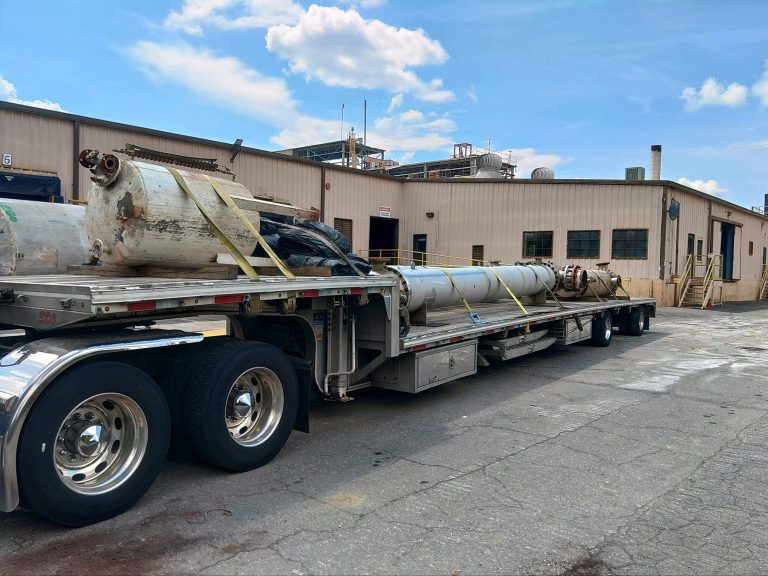
10 Common Mistakes in Truck Dispatching and How to Avoid Them
Our guide will help you start a trucking business in 2024. We’ve covered all the bases so that you can get your business on the road.
|
Call Now! (404) 987-8447 |
Like many logistics-oriented sectors, the world of truck dispatching relies on systemic efficiency in order to work. There are often multiple stopping points to make, different types of cargo to load and offload, and no small degree of communication to uphold.
Being prepared for hold-ups and mistakes along the way is crucial for avoiding issues and ensuring that goods get transported successfully at every point of the route.
But which mistakes are the most common, and how can drivers and the companies they work for avoid them? Below, we’ll explore ten of the most frequently occurring mistakes in truck dispatching and how to avoid them for a better, faster, and more seamless logistics process.

The biggest mistake any truck dispatching company can make today is failing to utilize the broad spectrum of software tools available for logistic optimization.
Today, there are all kinds of technologies available that can help with driver communication, route optimization, compliance regulation, customer feedback, and many other essentials for a smooth-running dispatch process.
Technology can help with everything from fleet management to driver safety. By investing in the right technology for your fleet, you can avoid a number of common trucking mistakes.
When your drivers are out on the road, there are a few different people or companies they need to be in contact with. The cargo recipient, other drivers, fleet managers, and emergency resources are just some of the entities that a driver may need to communicate with.
Equipping your fleet with the right communication tools is absolutely necessary to avoid issues. Limited communication not only puts drivers’ health and safety at risk but also prevents operations from running smoothly throughout the day.
Drivers are, first and foremost, regular people. They have needs just like any other type of employee. Some might say even more than the average Joe due to the long, often isolated, hours that truckers work due to the nature of the job.
Ignoring or neglecting driver preferences can lead to low employee morale and a high turnover rate, neither of which are good for business.
However, you can avoid these problems by listening to employee complaints and taking their suggestions seriously when they arise. The more needs you can meet, the happier and more productive drivers will be in the long run.
Different loads require different trucks. Failing to match these two crucial parts of the dispatch process can result in unnecessary stalling and vehicle damage, which can hinder efficiency and slow down the process.
Fortunately, accurately matching loads to trucks is not an overly complicated affair—it just requires the input of an expert who understands how different trucks work and what kind of loads they can reasonably take.
Customers are your lifeline. Ignoring their preferences and availability windows will not only frustrate them and drive them away, but it will also hamper your productivity schedule. Make it easy for customers to vocalize their preferences and respect their wishes as best you can.
Compliance laws are not static. In fact, the FMCSA tends to update them on a fairly regular basis. Failing to take note of them can result in serious legal trouble for you and your drivers.
Keeping up to date with vehicle and logistic compliance is crucial for any fleet company that wants to avoid fines, legal battles, and general hiccups.
It’s an easy one to avoid, though—just make sure your team is fully informed about every regulatory change throughout the year. You can do this by using a compliance tool, keeping up with the news, and adding regulatory compliance to your staff’s responsibilities.
Ineffective route planning can lead to several issues. Not only does it slow down operations and make customers unhappy, but it also hampers driver productivity and can contribute to employee satisfaction.
For instance, directing a driver on a longer route than necessary can cause unnecessary fatigue, frustration, and poor driving behavior.
It can also result in an excessive amount of fuel being used. The solution? Use a route-mapping app to find the fastest options available.
Another common mistake in the truck dispatching industry is overloading drivers with deliveries. Don’t give drivers more than they can reasonably deliver within a working day; otherwise, the risk of employee unhappiness and customer ire is all too high.
Instead, monitor the loading strategies and review them regularly to ascertain when a load becomes too much. Listen to the drivers—they know what they’re talking about!
Vehicle maintenance is crucial to dispatch optimization. And sadly, it’s also one of the most common pitfalls in the industry. and generally obstructs efficiency. A lack of maintenance could lead to a dangerous accident or chemical spill, a fatal collision, or simply a lack of overall efficiency.
Don’t let that happen to your fleet. Using a maintenance app or keeping strict records of vehicle servicing throughout the year will save you time, money, and potentially loss of lives. Deal with each issue promptly.
There’s only so much you can do to prepare for bumps in the road. But being too rigid about how you operate can be just as prohibitive as being too lax.
Allow some room for adaptability so that your customers, drivers, and everybody else involved can make adjustments where needed and roll with the changes as they happen. Just ensure that you always prioritize safety and security, and that changes don’t have any potentially negative long term effects.
Mistakes are a part of life. But that doesn’t mean there aren’t ways to minimize their negative impact or even avoid them entirely. In the logistics industry, efficiency is everything, and being aware of common pitfalls is necessary for maintaining control over operations.
By investing in telematics technology, enhancing communication, listening to driver needs, and keeping up with vehicle maintenance, you can create a sustainable logistics system that benefits both drivers and customers, both now and in the future.
Do you need the best truck dispatch company in the US to handle your dispatching needs and keep your trucks on the road? Hire us for help.

Our guide will help you start a trucking business in 2024. We’ve covered all the bases so that you can get your business on the road.


Our guide will help you start a trucking business in 2024. We’ve covered all the bases so that you can get your business on the road.


How To Be A Truck Dispatcher From Home How To Dispatch Trucks From Home Post-pandemic, many jobs have been shifted to remote, cutting out many


Average Fuel Mileage For Semi Trucks Which Semi Truck Gets The Best Fuel Mileage Semi-trucks get an average of 6.5 miles/gallon. This number depends on


What Kind of Insurance Do Truck Drivers Need What Insurance Do Truck Drivers Need Insurance is necessary for truckers and trucking businesses. The specific type


Top Reasons to Be an Owner-Operator Reasons To Be An Owner Operator Truck Driver The truck industry is growing fast. Drivers are increasingly switching over
Copyright © 2024 Truck Dispatch 360 | Privacy Policy